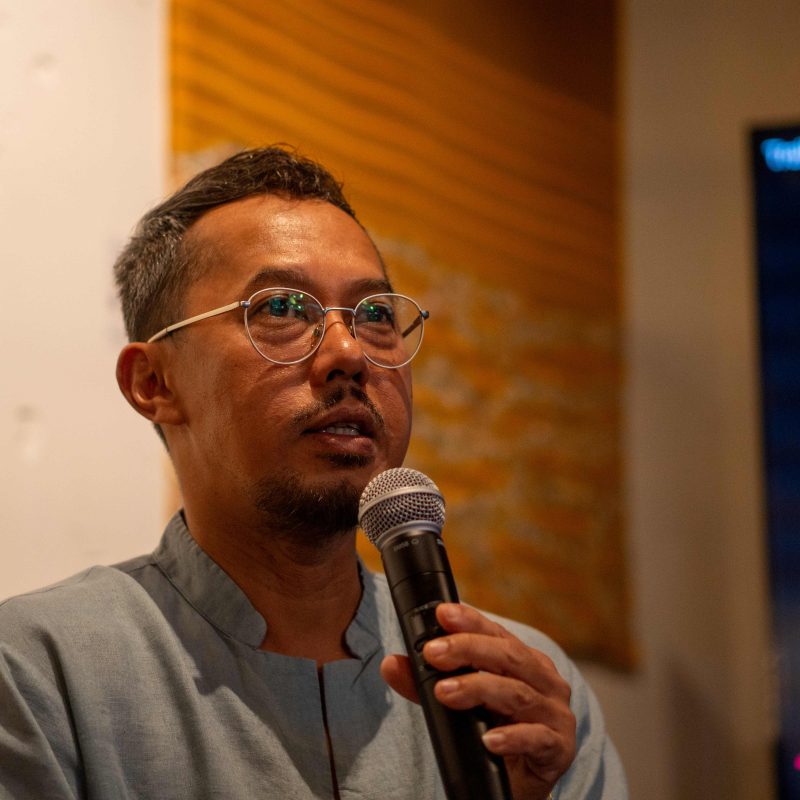Southeast Asia is a vast region with incredible internal diversity. Art from this region is often categorised under one market — and its different countries with their respective arts ecosystems working together have become a driving force for the market to thrive. We hone in on some of the artists on our radar hailing from Thailand, Myanmar, and Cambodia.
1. Natee Utarit (Thailand)
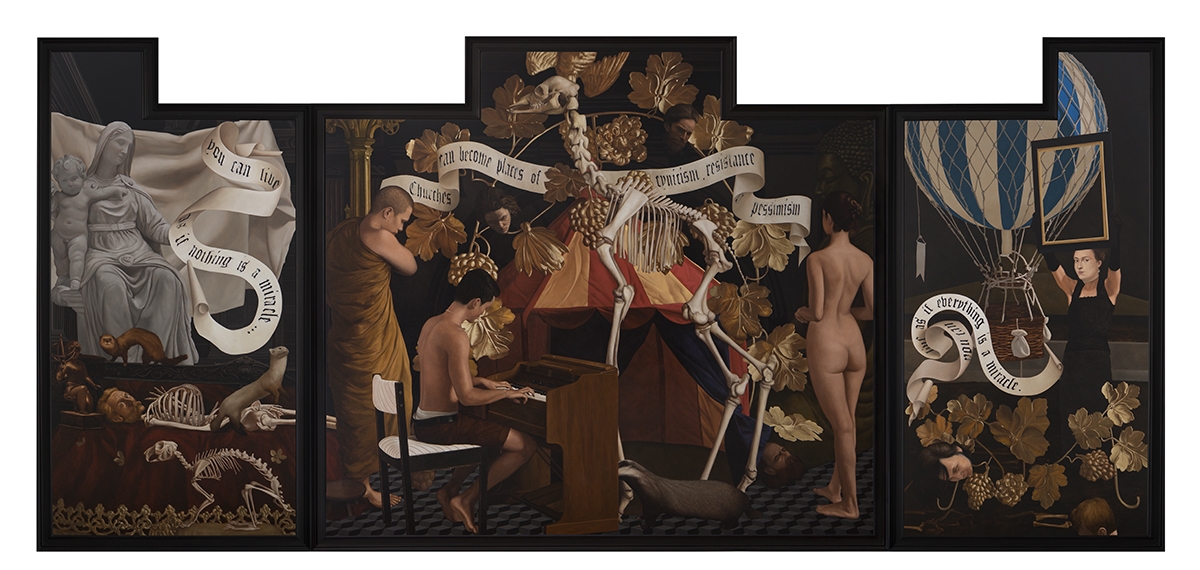
Natee Utarit, ‘Theatre of the Absurd’, 2015, oil on canvas, triptych, 250 x 540 cm. Image courtesy of Richard Koh Fine Art and Asia Society.
From detailed realistic paintings that make use of religious motifs to capturing everyday scenes, Natee Utarit engages with a wide range of forms to allude to the present socio-political landscapes of Thailand. Utarit’s works reference techniques of Western painting, incorporating aesthetics of history painting, landscape, portraiture and still life into them. Drawing on philosophy and religious beliefs, his paintings question what it means to employ these Western visual strategies and signifiers to create images that present alternative perspectives to notions of origin, tradition, and hybridity between East and West. Utarit’s works are included in many global collections, namely Queensland Art Gallery and Gallery of Modern Art, Brisbane; Singapore Art Museum; Bangkok University; and private collections in Europe and Asia, among others.
–
2. Pannaphan Yodmanee (Thailand)
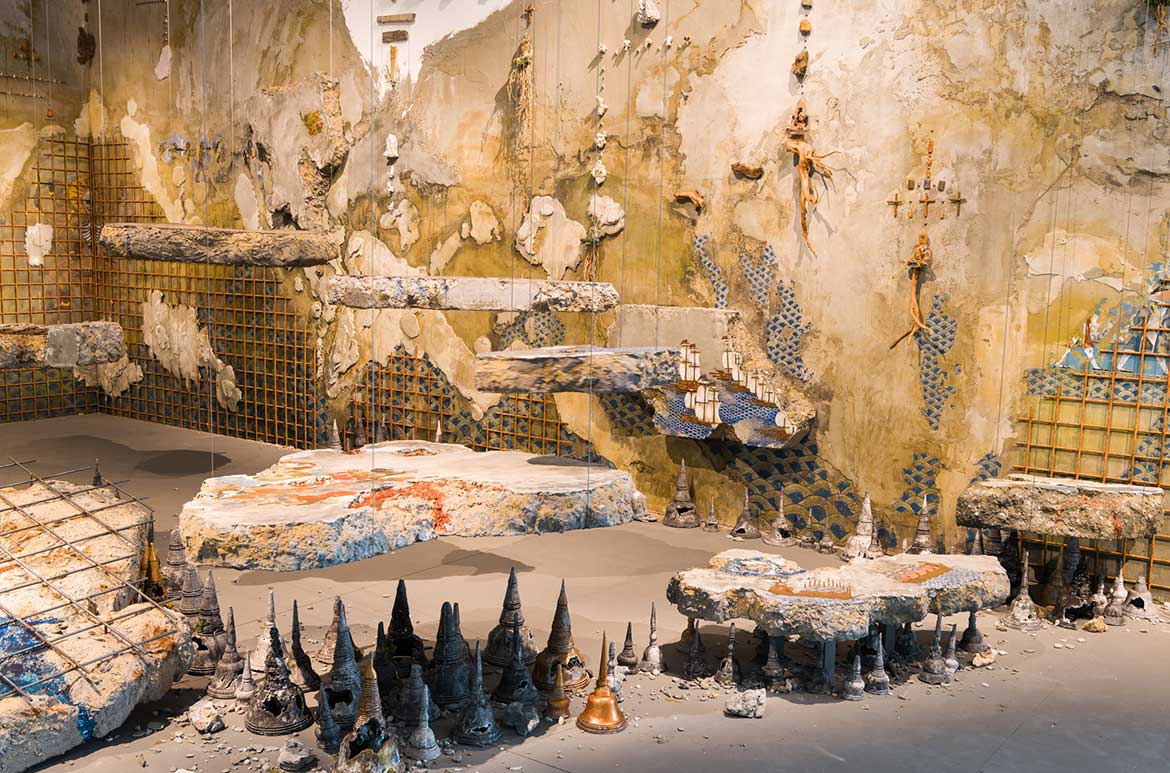
Pannaphan Yodmanee, ‘In the aftermath’ (and details), 2018, Found objects, artist-made icons, plaster, resin, concrete, steel, pigment, site-specific installation, Gallery of Modern Art (GOMA), commissioned for ‘The 9th Asia Pacific Triennial of Contemporary Art’ (APT9). Image courtesy of QAGOMA and Yavuz Gallery, Singapore.
It’s hard to not linger when looking at Pannaphan Yodmanee’s works — her complex use of materials carves a beautiful depth to her pieces that warrants slow and careful inspection. Each of the many textured surfaces is a testament to acts of loss and residue, achieved through her frequent use of rocks and minerals to investigate such natural phenomena. Yodmanee grew up visiting her local Buddhist temples and shrines, and along with her training in traditional Buddhist painting, the artist enroots a deeper understanding of Buddhist philosophies and cosmologies in her works. Whether it be intricate mixed-media paintings to larger installations of the rust and rubbles of urban landscapes, Yodmanee’s mesmerising works excavate karmic connections and cycles of destruction and regeneration. She was awarded the prestigious Benesse Prize in 2016 and has participated in large institutional shows, such as the Lyon Biennale, Bangkok Art Biennale, Singapore Biennale, and 9th Asia Pacific Triennial of Contemporary Art, Australia.
–
3. Richie Htet (Myanmar)
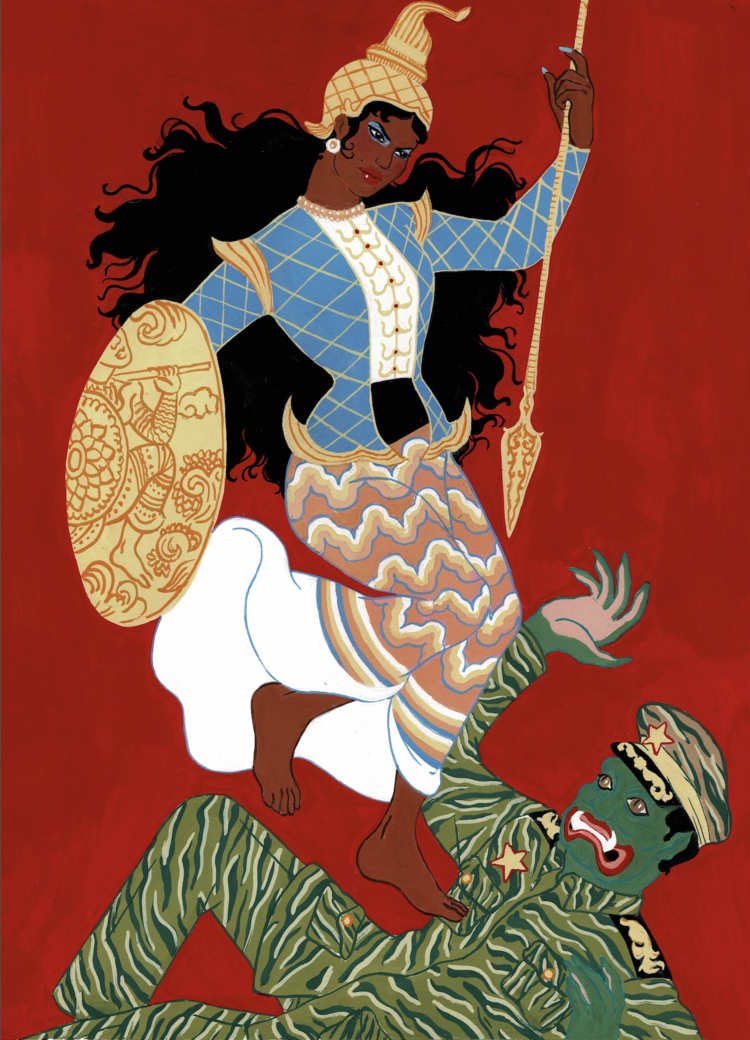
Richie Htet, ‘Bitch Better Have My Democracy’, 2021, gouache on paper. Image courtesy of 16albermarle Gallery and Project Space.
Richie Htet is becoming an increasingly familiar name within the regional contemporary art scene. He has been included in group exhibitions that took place at the NTU ADM Gallery and Richard Koh Fine Art, both in Singapore. His first solo took place in the gallery space of Myanm/art in 2020, titled ‘A Chauk: A Solo Exhibition’. Stemming from personal experiences of being called ‘a chauk’ — a derogatory Burmese term used towards those identifying as LGBTQI+ — Htet’s practice reclaims the label and deems it powerless, turning to eroticised folklore and epics of Nat spirits to question binary thinking and constructs of identity. Most recently, Htet’s response to the ongoing military coup is also depicted with similar motifs, centering queer representation in the fight for revolution. Originally trained in Fashion Illustration, he pays particular attention to the details and patterns of fabric, make-up, and vivid colours throughout his paintings.
–
4. Shwe Wutt Hmon (Myanmar)
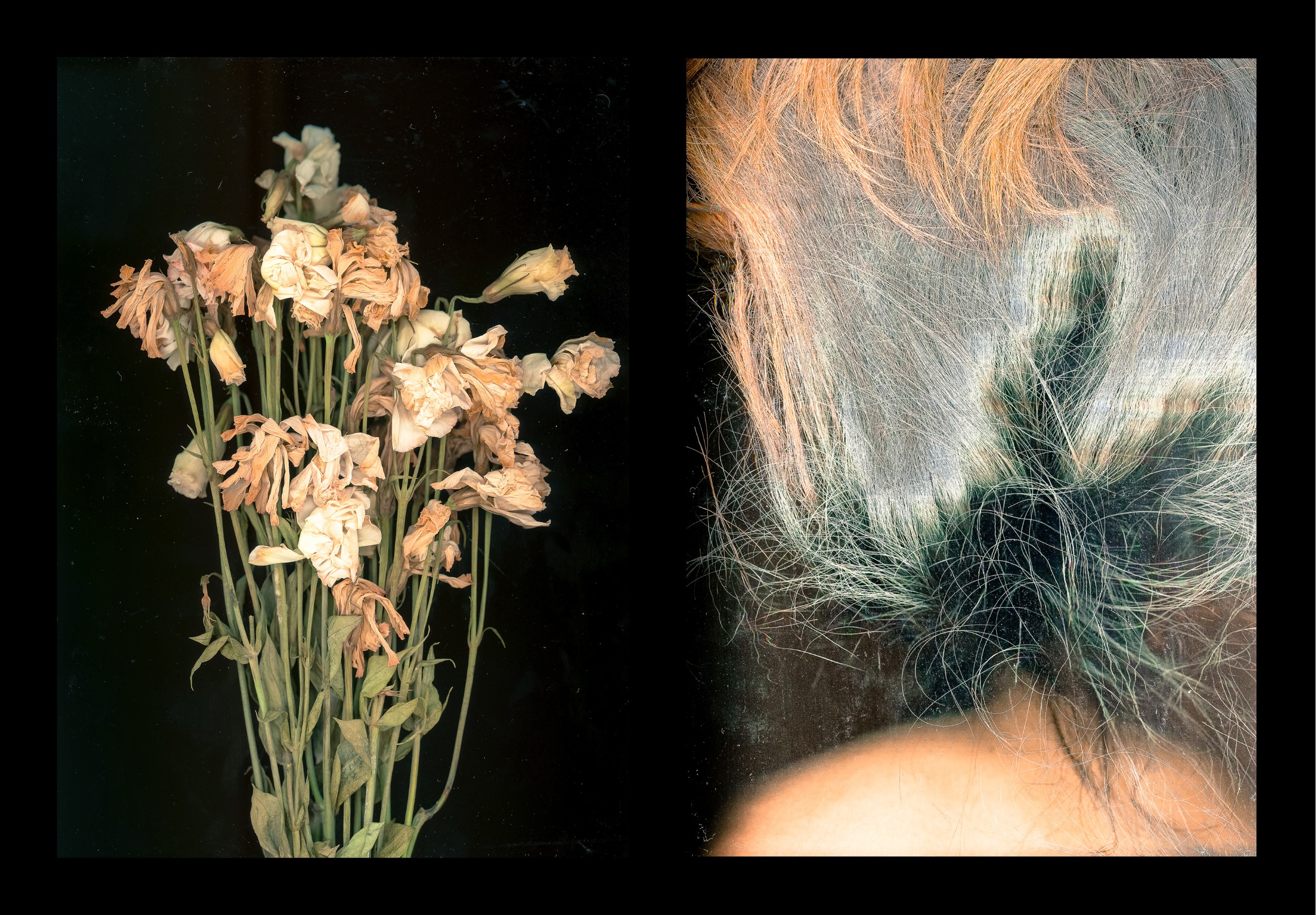
Shwe Wutt Hmon, ‘I Do Miss Hospital Visit’, 2020, digital scan. Image courtesy of Singapore Arts Club.
Many will know Shwe Wutt Hmon as one of the founding members of Thuma Collective, a group of female Burmese photographers. Thuma Collective has gained momentum in recent years, with participation in international projects such as the Kochi-Muziris Biennale in 2020, group exhibitions and photobook publications, all alongside each individual artist’s own projects. Naturally, Shwe Wutt Hmon’s photographic practice also engages with collective identity, as well as personal relationships and mental health. Recently the winner of the Julius Baer Next Generation Art Prize, the contending series of experimental photographs takes a look at archives of her own medical records and imaging done throughout her life. Self-scanned images of her scars and body are juxtaposed with withering flowers, contemplating its inevitable decline and decay and making peace with it.
–
5. Khvay Samnang (Cambodia)
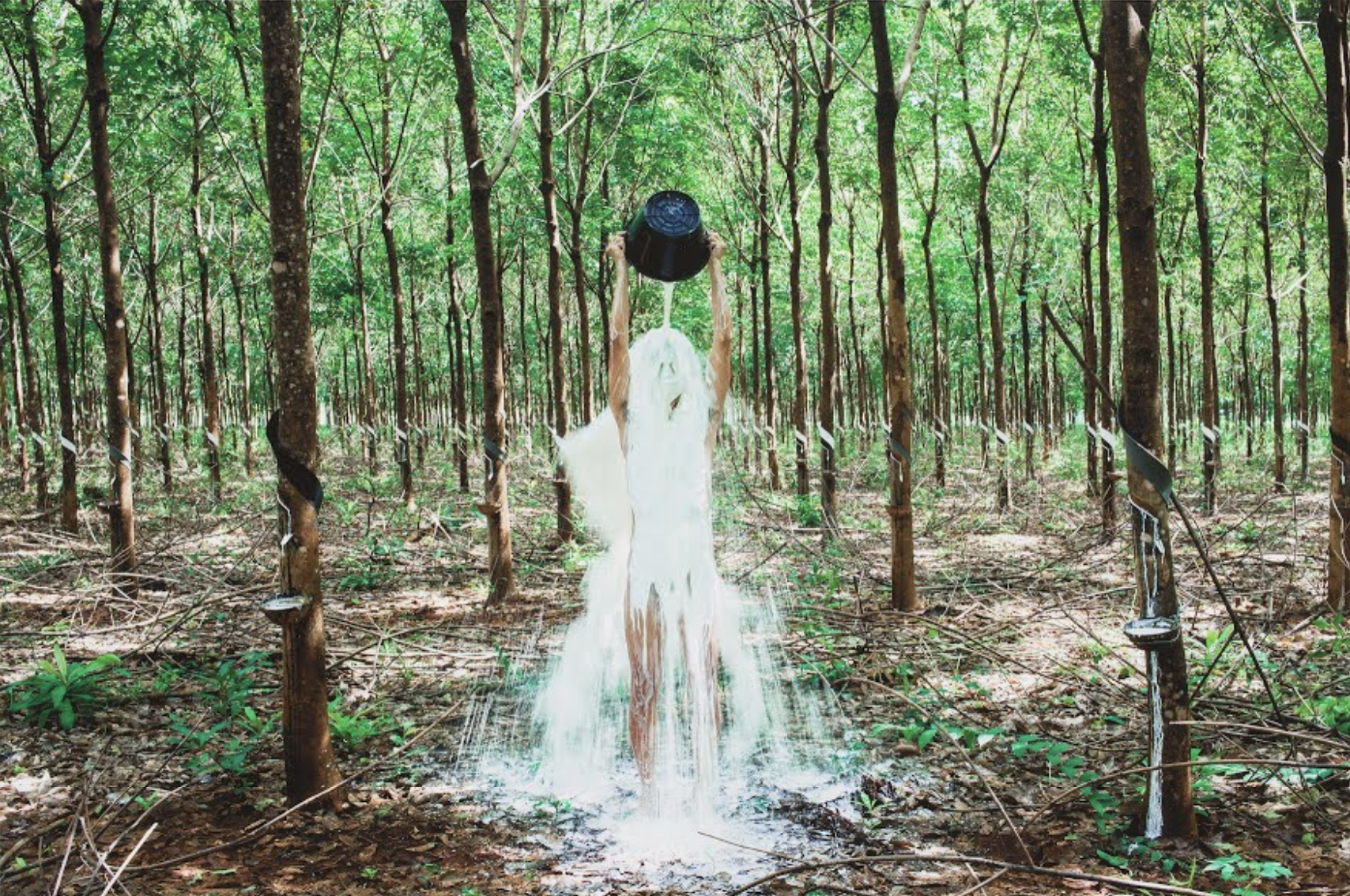
Khvay Samnang, ‘Rubber Man’, 2014, digital C-print; single channel HD video; three-channel video installation. Image courtesy of the artist.
Artist Khvay Samnang is a multidisciplinary artist who employs his practice as a vehicle to negotiate concerns of land use, environmental exploitation and other forms of colonial violence. He intentionally performs compelling gestures that at first might seem unexpected — but which in fact probe at other ways of expressing and interpreting histories, resisting dominant knowledge structures of popular media and official reports. Khvay is also a co-founder of Sa Sa Art Projects, a non-profit art space in Phnom Penh offering residencies and community programming. His works have been shown all over the world, notably in major group exhibitions such as the Taipei Biennial and Sydney Biennale, both in 2018, documenta 14 in Kassel, Asia Pacific Triennial of Contemporary Art (APT) in 2015, among others.
–
6. Sopheap Pich (Cambodia)

Sopheap Pich, ‘Morning Glory’, 2011, rattan, bamboo, wire, plywood, and steel. Image courtesy of The Guggenheim Museums and Foundation.
While born in Cambodia, Sopheap Pich immigrated to the United States where he spent most of his formative years. His experience and memories of war-torn landscapes, damage, and ruins seep into his sculptural practice. Mostly using traditional material like rattan and bamboo, he makes large-scale sculptures using weaving techniques to create satisfying curvatures and organic forms, evoking a raw beauty in their structures. Beyond sculpture, his paintings also make use of materials typical of Cambodian culture – it is through this tactility and manual labour that the artist revisits his own relationship to these materials and the culture they come from. Pich’s works are included in many public collections around the world such as M+ Museum of Visual Culture in Hong Kong, with many solos and group shows, including the 57th Venice Biennale.







